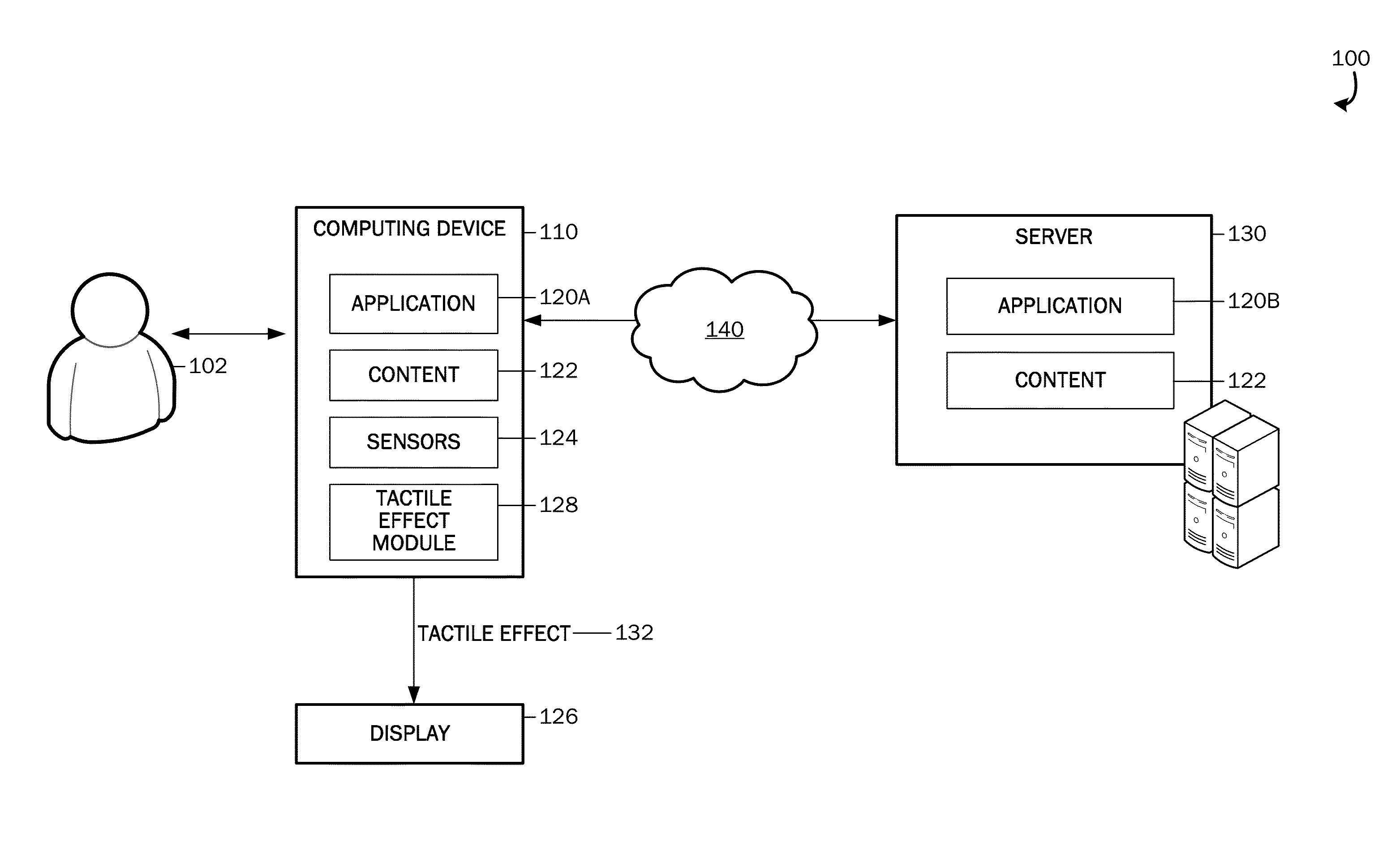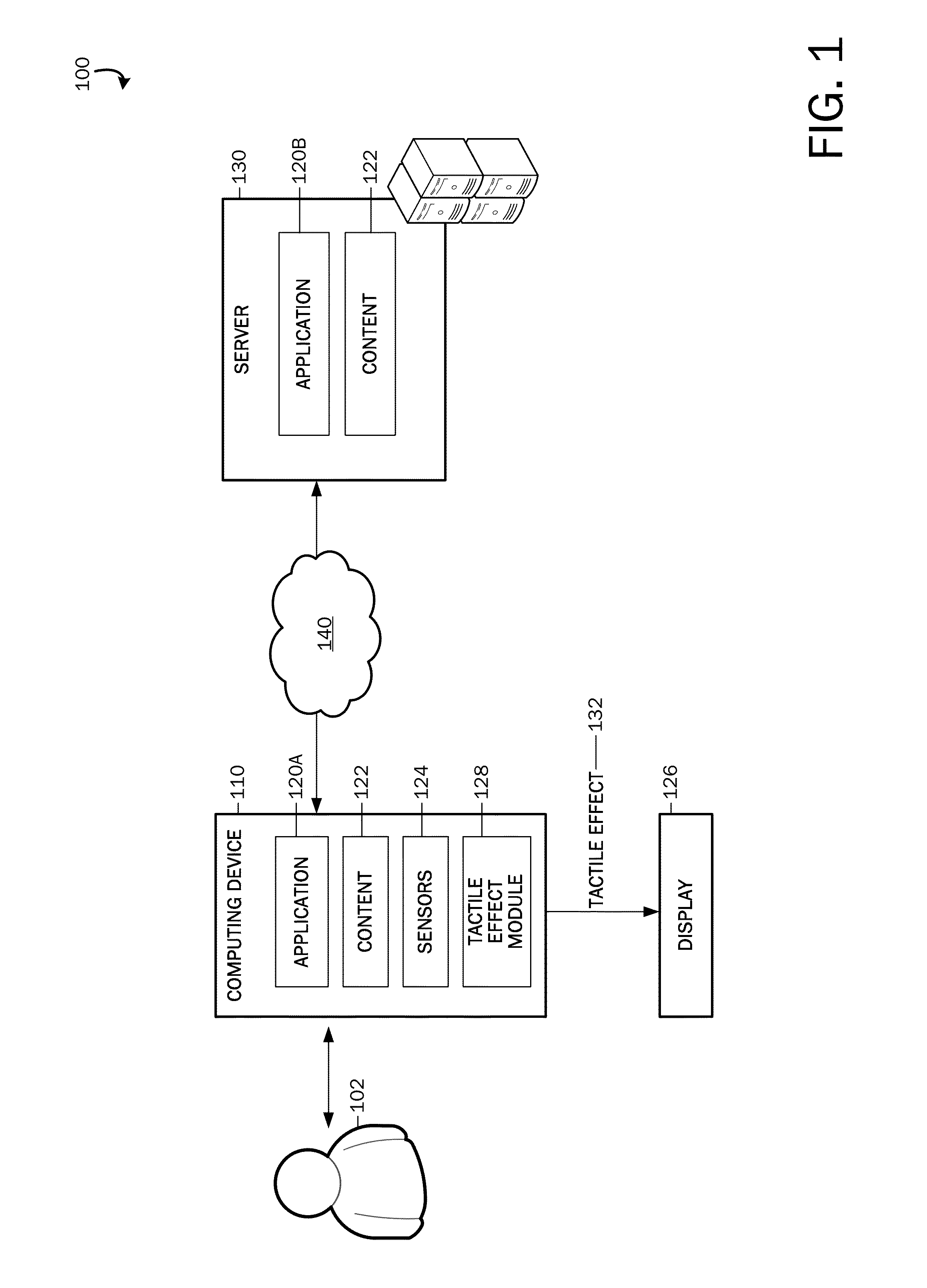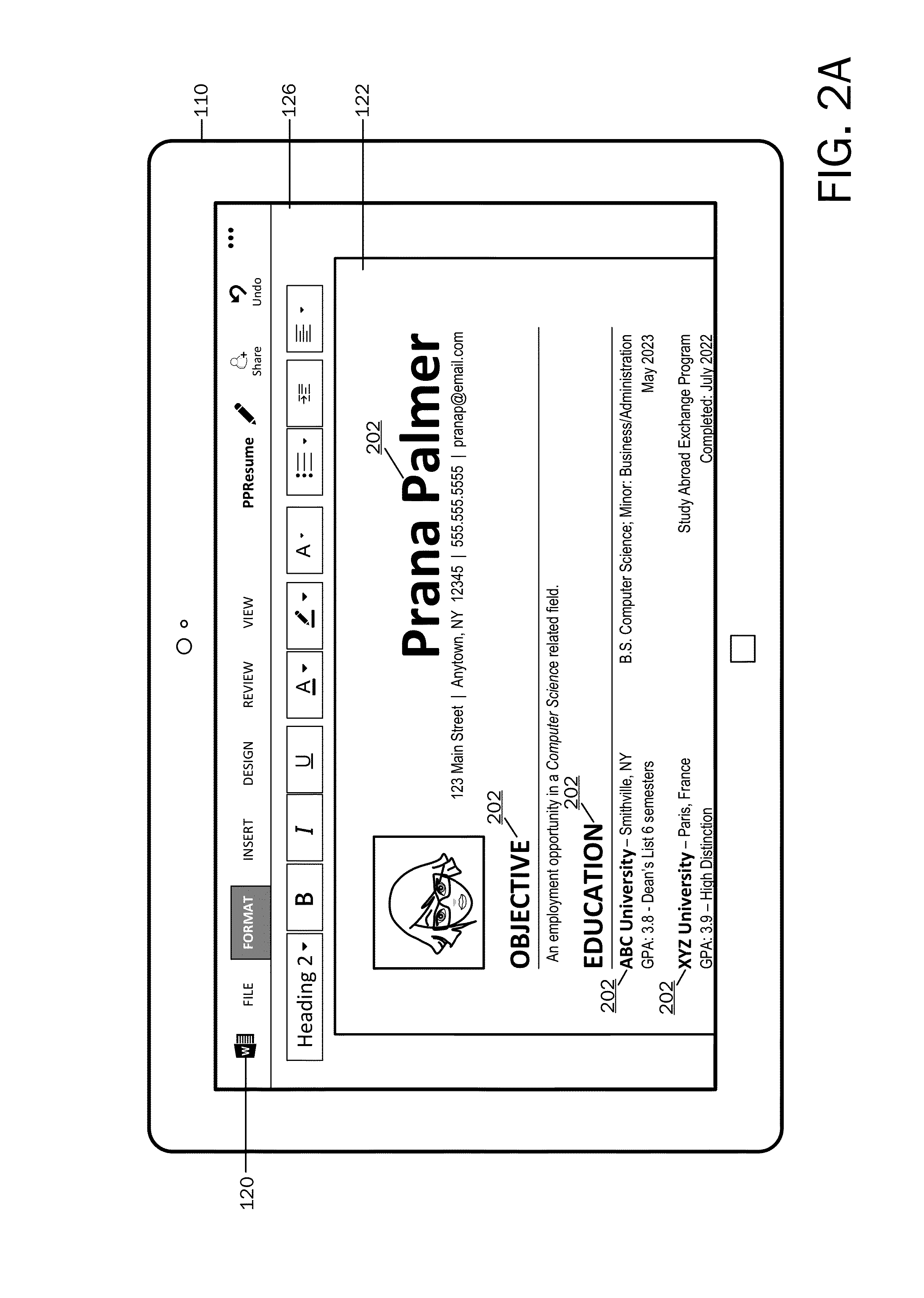Accessibility detection of content properties through tactile interactions
a technology of content properties and tactile interactions, applied in the field of accessibility detection of content properties through tactile interactions, can solve the problems of document reading and authoring, difficulty in identifying content, so as to facilitate comprehension of formatting and structure of documents and greater confiden
- Summary
- Abstract
- Description
- Claims
- Application Information
AI Technical Summary
Benefits of technology
Problems solved by technology
Method used
Image
Examples
Embodiment Construction
[0020]The following detailed description refers to the accompanying drawings. Wherever possible, the same reference numbers are used in the drawing and the following description to refer to the same or similar elements. While embodiments of the invention may be described, modifications, adaptations, and other implementations are possible. For example, substitutions, additions, or modifications may be made to the elements illustrated in the drawings, and the methods described herein may be modified by substituting, reordering, or adding stages to the disclosed methods. Accordingly, the following detailed description does not limit the invention, but instead, the proper scope of the invention is defined by the appended claims.
[0021]Embodiments of the present invention are directed to providing mapping of tactile effects to application user interface elements, formatting properties, and document structure. Referring now to the drawings, in which like numerals represent like elements, v...
PUM
 Login to View More
Login to View More Abstract
Description
Claims
Application Information
 Login to View More
Login to View More - R&D
- Intellectual Property
- Life Sciences
- Materials
- Tech Scout
- Unparalleled Data Quality
- Higher Quality Content
- 60% Fewer Hallucinations
Browse by: Latest US Patents, China's latest patents, Technical Efficacy Thesaurus, Application Domain, Technology Topic, Popular Technical Reports.
© 2025 PatSnap. All rights reserved.Legal|Privacy policy|Modern Slavery Act Transparency Statement|Sitemap|About US| Contact US: help@patsnap.com



